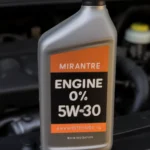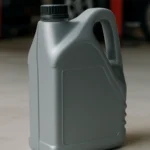Are you unsure about how to check your loss loss insurance household? Want to know how to confirm it and compare it by generation? This guide provides detailed instructions to help you understand every step of the process and find the right information!
How to Check the Loss Loss Insurance Household
When it comes to insurance, many people struggle with understanding whether they have proper coverage, especially when it comes to loss loss insurance. Checking if your household is covered by such insurance is essential, but how can you be sure? Here are a few methods you can use to check your loss loss insurance coverage:
-
Review Your Insurance Policy Documents The first step is to review any documents you’ve received from your insurer. Look for keywords like “loss loss” or “household” coverage in the policy details.
-
Check Your Insurance Statements Monthly or annual insurance statements should provide details on the coverage you have. These statements may list the type of coverage and whether or not it includes loss loss protection.
-
Online Insurance Accounts Many insurance providers now offer online portals where you can log in and check your coverage. This includes loss loss insurance, which might be listed under the “household coverage” or similar sections.
-
Contact Your Insurance Provider If you’re unable to find the information online or in your documents, contacting your insurance company directly can help. They can tell you whether your household is covered by loss loss insurance.
-
Ask Your Broker If you have an insurance broker who manages your policies, ask them for a confirmation. They’ll be able to give you precise details about the coverage.
If you’re unsure about your policy, it’s always worth checking with an expert who can clarify whether or not loss loss insurance is part of your coverage. Being informed is the best way to ensure that your household is adequately protected.
Learn more about checking insurance coverage!
How to Confirm the Loss Loss Insurance Household
Confirming whether your household is covered under a loss loss insurance policy is crucial, especially for financial planning. If you’ve followed the steps to check your policy documents and still aren’t sure, here are some specific methods to confirm your coverage:
-
Look for Confirmation Letters or Emails Your insurance provider may send confirmation letters or emails confirming that your household is covered. These official documents will clearly state the type of coverage you have.
-
Use Your Insurance Provider’s Mobile App Many insurers have mobile apps where you can log in to check your coverage. These apps may provide an easy-to-read summary of your insurance details, including whether you’re covered for loss loss insurance.
-
Request a Coverage Confirmation Letter If you’re still unsure, you can ask your insurer to send you a formal confirmation letter. This document will provide a clear answer about your coverage status.
-
Check Coverage Exclusions Some policies include a section on exclusions, which can help clarify whether or not loss loss insurance applies to your situation. This can be a helpful way to confirm coverage details.
-
Consult with an Expert If you’re still in doubt, consult with an insurance advisor or a financial planner who can review your policy and confirm whether loss loss insurance is included for your household.
Confirming your insurance coverage will give you peace of mind and ensure that your household is protected. If you find that you’re not covered, you may want to consider adjusting your policy to include this type of insurance.
Get expert help to confirm your insurance coverage!
Comparison by Generation Loss Insurance
Loss loss insurance policies may differ from one generation to another, with some families holding policies that date back decades. Understanding how loss loss insurance differs between generations can help you evaluate whether your policy is keeping up with modern standards. Here’s a comparison of how coverage has changed:
-
Older Generations Insurance policies from previous generations were typically more limited, offering basic coverage with minimal options. Loss loss insurance in older policies might not have the flexibility or modern benefits seen in newer policies.
-
Baby Boomers This generation saw the rise of more comprehensive household insurance policies. While loss loss insurance was becoming more common, the coverage options were still relatively standard and didn’t offer as many customizable options.
-
Generation X and Millennials These generations have access to more flexible insurance policies, which allow for additional coverage options, such as loss loss insurance. Policies today offer more specialized coverage to cater to changing needs, including natural disasters, home accidents, and other incidents.
-
Gen Z Younger generations are more likely to purchase insurance through digital platforms, often opting for policies that offer a balance of affordability and comprehensive coverage. Loss loss insurance has evolved to cover a wider range of risks, including modern household hazards like cyber threats or climate-related incidents.
Each generation approaches loss loss insurance differently, but the key takeaway is that as time goes on, coverage has become more tailored to meet the needs of modern households. If you’re unsure about how your coverage stacks up against current options, it’s worth reviewing the offerings available today.
Compare insurance coverage options for your generation!
Separation of Loss Loss Insurance
In some cases, loss loss insurance can be separated into different coverage types, depending on the specific needs of the household. These separations help ensure that you’re fully protected in the event of specific types of loss, such as damage caused by fire, theft, or natural disasters. Here are some examples of how loss loss insurance can be separated:
-
Fire Loss Coverage This type of insurance protects against damages caused by fire. It may include repairs to the home, replacement of personal property, and even the costs of temporary housing if the home becomes uninhabitable.
-
Theft Loss Coverage Theft loss coverage compensates policyholders for the loss of personal belongings due to burglary or theft. This type of coverage can also include protection against vandalism and malicious acts.
-
Natural Disaster Coverage This coverage protects against loss due to natural events like earthquakes, floods, or storms. In regions prone to these disasters, this type of coverage can be extremely valuable.
-
Liability Coverage Some loss loss insurance policies include liability coverage that protects against damage caused to others while at your home. This type of coverage may also cover injuries that occur on your property.
-
Personal Property Coverage This insurance ensures that your personal property, like furniture and electronics, are covered in case of damage or loss, often working hand in hand with the above coverages.
By separating coverage into different types, you can better control the specifics of your insurance policy. It’s important to review all available options and understand how each type of coverage works to ensure that your household is fully protected.
Separate your coverage for better protection!
Conclusion
Understanding how to check your loss loss insurance household, confirm its coverage, and compare it by generation is essential for ensuring your household is properly protected. By following the steps outlined in this guide, you can confirm your coverage status and make informed decisions about your insurance needs. Whether you’re considering adjusting your current policy or learning more about coverage options for future generations, being proactive and educated will lead to better insurance outcomes for you and your family.






